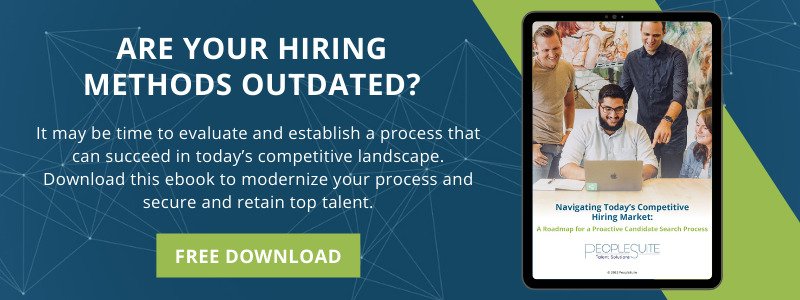During Spring 2021, employers throughout the United States began hearing about and experiencing a candidate-driven job market, or what has become known as “The Great Resignation.” Even before the term was coined, an article in HR Daily Advisor warned employers that a return to candidate-driven market was imminent, as the COVID-19 pandemic had shifted expectations and put greater emphasis on work-life balance.
In July 2021, Gallup released an analysis finding that 48% of working Americans were actively seeking jobs or carefully watching for opportunities. And employers, given the high quit rate and the exceptionally high number of available positions, are looking more closely at the candidate journey throughout the recruiting process.
Why Is The Candidate Journey Important to You?
There are people in your circles already immersed in the natural/organic space. Seek them out and ask questions. Can they introduce you to others in the industry? Are there people in your circles they should know? Don’t just think transactionally, exchange wisdom. You’re collaborating, looking for new connections, and growing relationships. Networking doesn’t have an off switch.
Quick tip: The focus isn’t, “How can you help me?” but rather, “How can we help each other?”
What Are the Essential Steps In the Candidate’s Journey?
For generations, employers only had to put an advertisement in the paper or an industry publication and wait for candidates to come to them. At least in the consideration stage, the job candidates put in most of the time and effort, writing resumes and cover letters and making follow-up calls to try to get an interviewer’s attention. Only in the past few decades have employers come to realize how tiring the process can be for earnest job seekers, especially during times when the market was not in their favor.
Now is a good time to establish practices that help make the journey easier for the talent you want to attract so they do not reject your company because of arduous or outdated processes.
Keep the following basic steps in mind regarding the ever-important candidate journey.
1. Awareness – Becoming Aware of a Job Opening and Company
The candidate awareness stage can happen through many different paths. Active job-seeking candidates might have known about your brand for years. Perhaps they felt inspired to pursue their career path based on your organization’s products, services, and overall vision and mission.
Here are five additional ways candidates learn about organizations that might offer a great professional fit for them:
- Job board postings, both online and at recruiting offices.
- Social media posts, such as those on LinkedIn and Facebook, that appear in their daily feeds.
- Clever job ads that appeal to your desired candidate demographic and posted on social media websites.
- Your business website’s careers or job listings page.
- Word-of-mouth, referrals, and company reviews on websites like Indeed or Glassdoor.
Regardless of the way a candidate becomes aware of your job opening, their recognition of your organization and decision to dig deeper serves as the launch point for an active, or a passive-turned-active, candidate’s path.
2. Interest – Researching Additional Information
Once you pique a candidate’s interest, they will likely start researching your organization and what it offers and stands for.
Here are three core things your candidates search for when they are researching your organization’s products and services, and deciding whether its values, culture and mission fit their own research stage:
- Information about the company. Ambitious and goal-oriented candidates want to know about your company’s core offerings, including your most valued products or services and your target audience. When your candidates diligently take on the mission of learning this information, it demonstrates their interest and desire to help you achieve your organizational goals. Candidates might learn this information by exploring your company website and blog posts, visiting your social media pages, and reading case studies and white papers.
- Information about the culture. These days, most of the top talent you seek are as interested in a positive experience as a paycheck. They will likely investigate your company’s culture, including whether you offer a remote, hybrid, or all-in-house working model. It’s more important than ever to set your organization apart by offering an upbeat, cohesive, and collaborative working environment. Find ways to express your overall company climate on your website and social media pages, using mottoes, catchphrases, employee group photos, and other imagery that lets candidates know more about your organization for improved talent attraction.
- Information about the position and benefits. Job candidates want to know what you have to offer them as early as possible in the hiring process. Even if you cannot or choose not to provide specific salary information, you might consider providing a salary range. Organizations that provide salary information in their job postings receive up to 41% more job applications than organizations that offer no salary information. Candidates want to know whether it is worth their time to take the next step. Providing as much transparency as possible about compensation, benefits, and any additional perks will help you attract the interested talent.
3. Application and Interview: Applying for the Position and Going Through the Interview Process
If a job candidate decides they are interested in working for your organization, they’ll take the next steps to apply and if they are promising, they’ll get an interview. Both these steps require time for everyone involved. For talent, these two steps can feel like a gamble. If you are inattentive to their journey, they might walk away feeling like you’ve wasted their time.
Keep in mind that they might even be a customer who now has a less-than-favorable view of your organization. If they are applying for other positions, and their experience with your organization compares unfavorably, they may leave a negative review of your hiring process online, where other candidates who might be perfect for your organization can find them.
Here are two vital things to keep in mind during the application and interview phases of hiring:
- Sell your company. In a candidate-driven market, you will need to persuade talent that your company is a place where they can grow and thrive. In the past, you might have gotten away with asking all the questions. Today, you want to make sure talent has time to ask questions and gather information so that they feel good that your organization is one where they can make a contribution and enjoy a work-life balance.
- Stay in contact. It is important to routinely communicate with candidates to maintain interest and transparency. Ask candidates for their preferred form of communication and respect their wishes for how and when to communicate with them. Regardless of the form of communication, keep candidates updated on their status for a position. The further along in the recruiting process you take a candidate, the more communication you need to maintain to ensure respectfulness and transparency.
Remember, even if you don’t hire them for a position you have open now, they may be perfect for a role you have six months or a year from now. They’re more likely to be responsive to you in the future if you’ve shown them professionalism and respect throughout the hiring process.
4. Hiring and Onboarding
Once you have narrowed down your candidates and have made your final selection, it is time to take the recruiting process to a successful close.
- Decide to make an offer. If you decide the candidate has the combination of skills, training and cultural fit that you are looking for, don’t wait to make an offer. Give them all the information needed to help them decide, including the salary, opportunities for bonuses, benefits package and starting date. Remember, this is a candidate-driven environment, and making an offer of employment is a step in impressing talent during the recruitment process. Don’t set unreasonable expectations for a reply and be sure to leave yourself room to negotiate. “Take it or leave it” thinking won’t work in a market where talent is in demand.
- Onboard the new employee. Onboarding new hires has become a crucial step in the recruiting process. You want to ensure that the new hire not only understands the company’s policies, rules, daily and long-term expectations, culture, and perks, but is warmly welcomed and received.
Invest in your new employees’ success. According to the Society for Human Resources Management, it costs an organization an average of 6 months of an employee’s salary to hire and train his or her replacement. An established and comprehensive onboarding process, clear expectations and regular reviews can help ensure new talent feels fulfilled and invested in the success of your organization.
5 Things You Can Do to Create a Compelling and Noteworthy Candidate Experience
There are several things you can do to establish a meaningful candidate experience:
- Engage the candidate by using their preferred communication method, whether that’s by email, texting, or telephone calls.
- Provide specific information about the position, benefits, and compensation instead of vague generalities.
- Give a glimpse of the company culture through words and images on your website and social media pages.
- Maintain open and honest communication with talent throughout their journey.
- Ensure a smooth transition from job candidate to new employee, using a strong and detailed approach to onboarding.
4 Benefits of Providing a Positive Candidate Experience
Establishing and maintaining a hiring philosophy based on providing a positive candidate experience yields several benefits, including:
- Improved quality of hire
- Larger talent pool
- Greater ability to “win” top talent
- Increased brand awareness and better organizational reputation, which directly supports your hiring efforts
Let PeopleSuite Help You Improve the Candidate Journey!
Our executive search team at PeopleSuite is devoted to helping you provide a positive candidate experience. Our firm focuses on ensuring the perfect balance between the employer’s and the candidate’s journey to help create the best connections for successful, long-term employment
As a dedicated executive recruiting firm, our professionals make time to communicate with you and answer any questions your candidates might have. We get to know your company culture and will help you attract the right candidate, with the hard and soft skills needed to be successful. Contact us to learn more!









